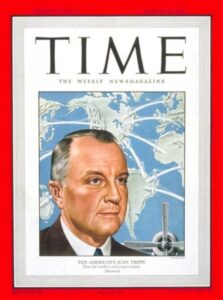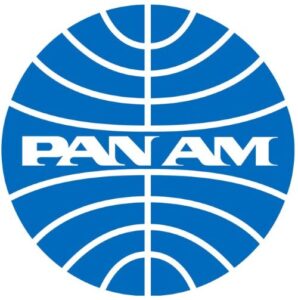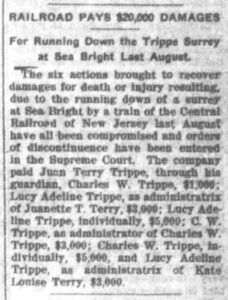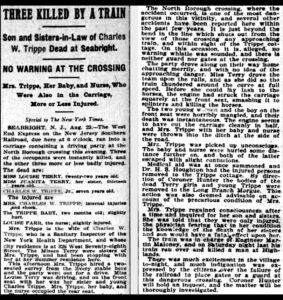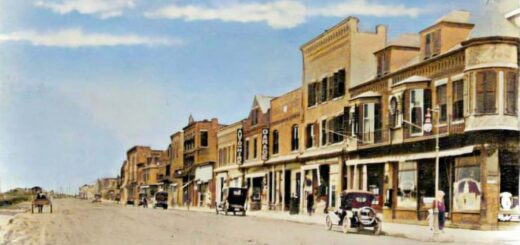Near Miss for “Sky King”
Juan Trippe survived to build an air-transport empire …
The railroad played a major role in the early development of our shore area dating back to Gilded Age times. For an idea of rail volume when Sea Bright was a leading summer resort (in August 1889) consider — 80+ trains ran between Sandy Hook and Sea Bright every day.
And in one very dark chapter — a hometown train nearly killed arguably the single most influential person in 20th-century commercial air transportation.
Area railroad travel officially began in August 1865 when the Long Branch & Sea Shore Railroad opened, running from Spermaceti Cove on Sandy Hook to Long Branch. The Central Railroad of NJ acquired the line in 1882 and ended service to Long Branch in November 1945. The first Sea Bright train station was built in 1871 and replaced with another in 1901. What ultimately doomed rail transport were the frequent assaults by storms and high tides through the years.
On a late summer weekend in August 1899, Juan T. Trippe, founder of Pan American World Airways and a Sea Bright native, was nearly killed there in a “frightful” train accident. Born in Sea Bright in June 1899, Trippe would become America’s top commercial aviation pioneer.
Believing that passenger demand would catch up to airplane size, Trippe single-handedly pushed Boeing to build bigger planes (the “Jumbo Jets”). Pan Am was the first airline to truly go global, opening routes across Latin America, the Pacific, and the Atlantic in the 1920s. At its height, Pan Am served over 85 countries on six continents. It was the first airline to offer “around-the-world flights” (in 1947) and regular transatlantic jet service (in 1958). By the late 1960s, Pan Am accounted for nearly half of US international air traffic. Sporting a sleek blue globe logo, Trippe exhibited an international style and sophistication with Pan Am — an airline recalled for its luxury services and iconic “flight attendants.” It even had its own ABC-TV network show in 2012.
Trippe survived the accident as a baby, even while three family members were killed and two others injured. “Out for an afternoon drive” — the passengers were riding in a rented horse-drawn surrey (a two-seat, doorless carriage). The train engine “struck the carriage squarely,” according to a New York Time report, “smashing it to splinters and killing the horse.” It was “instantaneous death” for the victims who were left “mangled beyond recognition.” The surviving Trippe family members were awarded $20,000 in damages after an “exhaustive” 5-hour inquest in town.
A US Navy pilot during WWI and Yale University graduate, Trippe was CEO of the jet-setting airline from 1927 to 1968. The ”King of the Skyways” lived a long-life too — passing in April 1981. Amidst deregulation, rising fuel costs, and competition, Pan Am went bankrupt in 1991.
It seems that Trippe still loved beach life, though, just not anything at Sea Bright. He would go on to enjoy many seashore days in East Hampton, NY — buying property there in the 1930s and raising a family for 50 years on the Long Island shore.
• Local Railroads: SB • MB • LB — MORE INFO
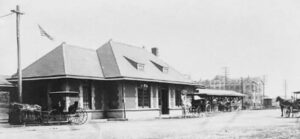
All Aboard — Sea Bright Railroad Station, 1900. Around the time — a deadly train mishap nearly killed a jet-age pioneer. Called a “grade crossing” it’s an intersection where a road and a railway line cross. Sea Bright lacked the necessary safety measures (no warning whistles, gates or a flagman) that day. The offending train was the West End Express headed south. Juan’s father, Charles W. Trippe, blamed the Central Railroad of NJ for the tragedy.
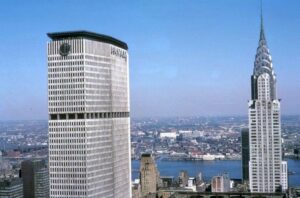
Skycrapping Too — Pan Am Building (next to Chrysler Building) in NYC, 1969. The 59-floor Park Avenue skyscraper cost $100 million and opened in 1962. Today’s it’s the MetLife Building. According to a May 1968 New York Times profile, Trippe “possessed the ideal combination of talent and drive to build a great airline.”
